On 18 August 2019, a 49-year-old Australian, Andrew Gosling, flung a wine bottle from the seventh floor of a condominium in Spottiswoode Park Road. It killed 73-year-old Nasiari Sunee, an elderly delivery driver (and grandfather of 9), and injured his wife.
More than two years later, on 25 February 2022, Gosling admitted in court that he was “a bit drunk” and had yelled vulgarities about Muslims after he flung the 600g bottle. He will be sentenced in April.
Based on court statements, Gosling had been drinking alcohol when he saw a group of Malay-Muslims having a barbecue two storeys down from his balcony. Later that evening, while disposing of rubbish at a common chute at a lift lobby, he found an empty wine bottle and threw it towards the group to “startle” them.
When police officers interviewed Gosling as part of their door-to-door investigation and showed him the bottle, he lied, saying he had never seen it before. Realising that the bottle could be traced to him after providing his DNA and fingerprints to the authorities, he finally surrendered ten days later on August 28.
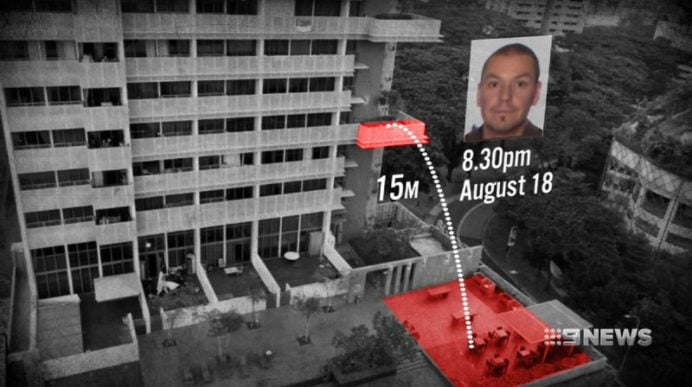
Sunee’s nephew had previously written a Facebook post on 30 August 2019 asking Singaporeans not to be prejudiced against Gosling just because he is a foreigner on Singapore soil.
Netizens showed their support on Reddit with comments such as “I can only hope that I can be that mature and generous in the face of grief.” and “Pure class. Condolences to the nephew.”
Unfortunately, Gosling’s case is just one of many killer litter incidents in recent years.
In September 2021, a 64-year-old man threw a standing fan, yellow plastic chair, and assorted CDs down from a unit Block 33.
In August 2020, a 35-year-old man was taken to Changi General Hospital after being struck on the head by a beer bottle inside a plastic bag at Block 227A Sumang Lane.
On the morning of 9 March 2020, a 46-year-old woman threw five metal pots, a computer processing unit (CPU), computer monitor, sound bar and Hi-Fi set out of the window of her flat in Bishan.
The court heard that she did it because she felt upset and frustrated about spending her days at home while her husband and son were in prison. A Reddit commentator had this to say, “I was just wondering why she threw things out of the window. I read the report annnndddd I don’t know how I feel about this…”.
Addressing and curbing killer litter has been an ongoing campaign in our city of high-rise residences. What has the government been doing to deter such behaviour?
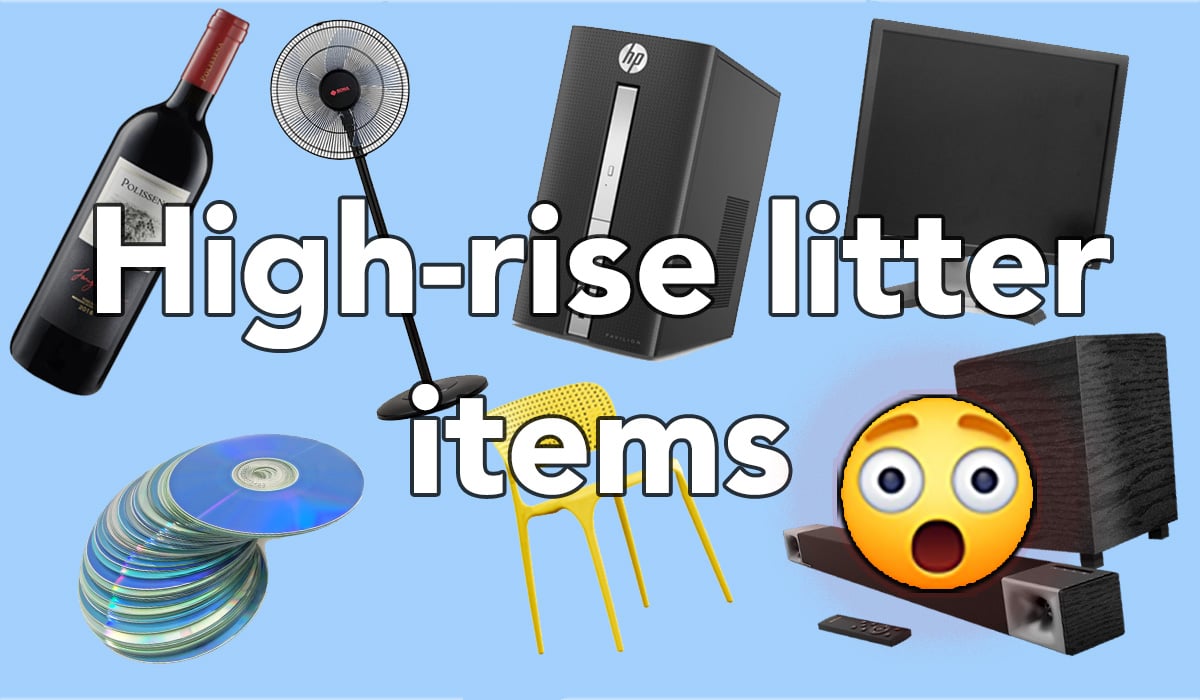
What the National Environment Agency (NEA) is doing
From 2019 to 2020, there was a 45 per cent increase in feedback to the National Environment Agency (NEA) about high-rise littering, likely due to more people working from home in 2020.
NEA adjusted its enforcement posture and prioritised resources on areas with higher feedback. The agency adopted a holistic approach involving enforcement, advisory, and education to tackle high-rise littering.
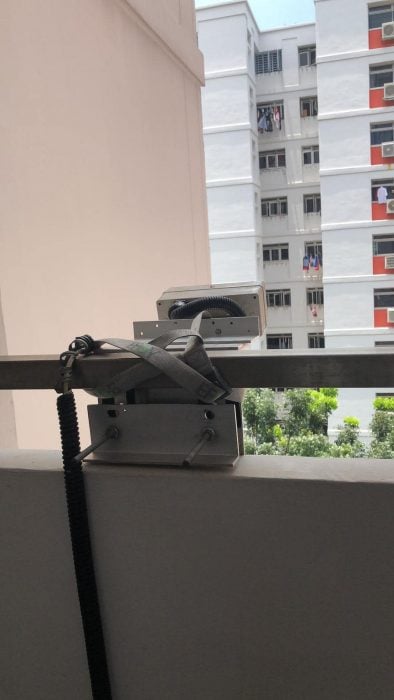
Enforcement: NEA increased its high-rise littering camera deployment by more than 50 per cent from 2019 to 2020, resulting in an 80 per cent increase in the number of high-rise littering acts captured and over 1000 enforcement actions taken against high-rise litterbugs. To safeguard the privacy of residents, the cameras are positioned to focus only on the external facade of buildings and not on homes. Additionally, both uniformed and ununiformed NEA enforcement officers were deployed to conduct targeted enforcement at various littering hotspots.
Advisory: NEA also works closely with local stakeholders, such as Town Councils, to distribute advisories or posters at housing estates with continuous feedback on high-rise littering.
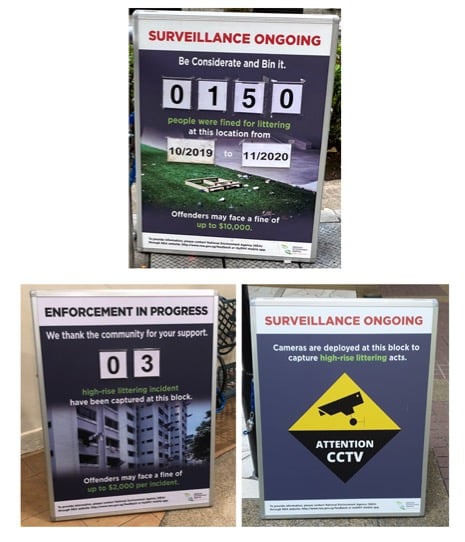
Education: In 2019, NEA revamped the Corrective Work Order (CWO) vest’s design to increase the CWO’s visibility and deterrent effect. NEA also introduced informative standees, highlighting the number of littering incidents detected in the area and the enforcement actions taken in areas where CWO sessions were held. After the feedback in 2020, NEA trialled the deployment of informative standees at public places with continuous littering feedback before rolling it out islandwide in 2021.
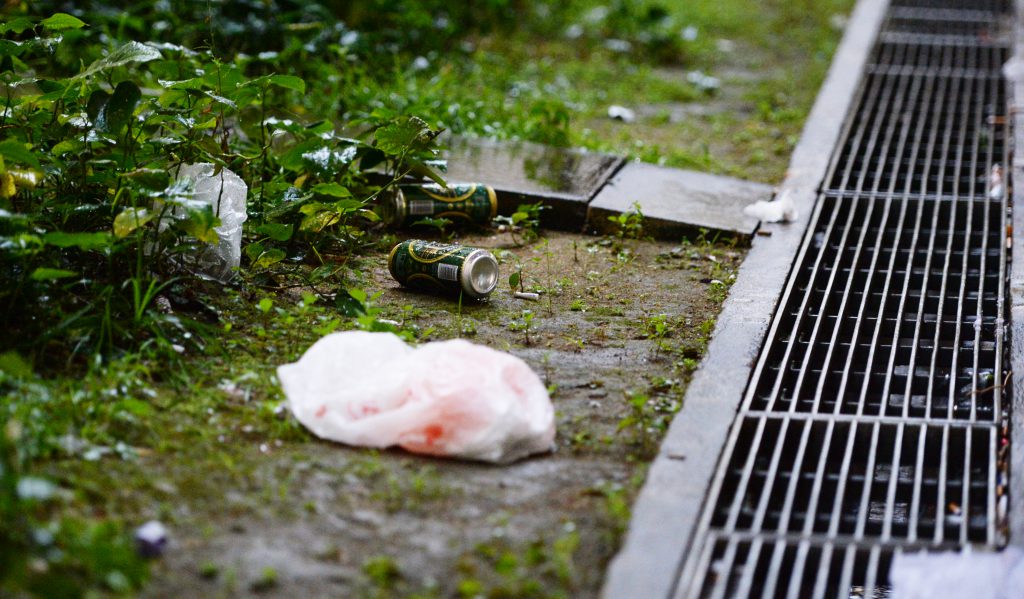
Penalties for Killer Litter
Alongside NEA’s efforts, Singapore has strict penalties for high-rise-littering to deter such behaviour. There are three offences for killer litter under the Penal Code, S336, S337, and S338.
S336 – Punishment for an act that endangers human life or the personal safety of others: For a rash act, a person can be fined up to S$2500 and/or imprisoned for up to 6 months. For a negligent act, they can be fined up to S$1500 and/or imprisoned up to 3 months.
S337 – Punishment for causing hurt by an act that endangers human life or the personal safety of others: For a rash act, a person can be fined up to S$5000 and/or imprisoned for up to 1 year. For a negligent act, they can be fined up to S$2500 and/or imprisoned up to 6 months.
S338 – Punishment for causing grievous hurt by an act that endangers human life or the personal safety of others: For a rash act, a person can be fined up to S$10,000 and/or imprisoned for up to 4 years. For a negligent act, they can be fined up to S$5000 and/or imprisoned up to 2 years.
With that said, curbing killer litter is not the sole responsibility of the government. Residents have the civic responsibility to prevent killer litter as well. While most of us would not intentionally throw things from a high-rise building, it is also important to be mindful not to place or hang objects (e.g. flower pots, bird cages, mops, washbasins, laundry brackets, etc.) on window/balcony ledges and or on the parapet walls of common corridors.
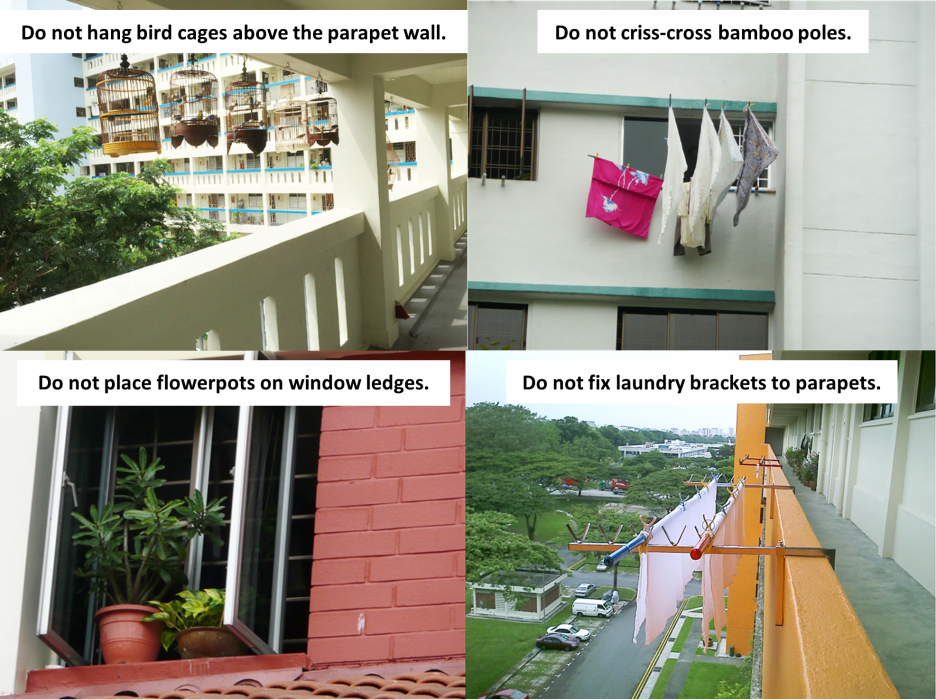
To report potential killer litter in common areas and potential killer litter inside HDB flats, residents can call their Town Council or HDB’s Branch Service Line (1800-225-5432).
–
Have you encountered killer litter in your neighbourhood? Tell us why in the comments section below or on our Facebook post.
If you found this article helpful, 99.co recommends checking Four easy ways to spot bad neighbours before buying an HDB Unit and Waste disposal in high-rise homes in Singapore: Then and Now.
Looking for a property? Find the home of your dreams today on Singapore’s fastest-growing property portal 99.co! If you would like to estimate the potential value of your property, check out 99.co’s Property Value Tool for free. Also, don’t forget to join our Facebook community page or Telegram chat group! Meanwhile, if you have an interesting property-related story to share with us, drop us a message here — and we’ll review it and get back to you.
The post The rise of killer litter and the government’s responses so far appeared first on 99.co.

